Few vehicles have earned the kind of respect and cult-like following that the Jeep Wrangler enjoys. It’s not just a car—it’s a symbol. A statement, a badge of freedom for those who crave adventure, off-road exploration, and raw mechanical capability.
Since its roots as a military workhorse during World War II, the Jeep has evolved over the decades into a consumer icon known for its rugged design, removable doors, and go-anywhere attitude.
Among these, the Wrangler stands tall as the flagship of off-road culture. However, not all Wranglers are created equally, especially when it comes to one of the most important components in any off-road vehicle: the suspension.
Suspension isn’t just about comfort—it’s about control, capability, and survivability. A good suspension system allows a Wrangler to flex over rocks, absorb the shock of rough terrain, and keep all four wheels on the ground, ensuring maximum traction.
A poor suspension setup, on the other hand, can limit performance, compromise safety, and even lead to costly damage when taken off the beaten path. It’s the difference between dominating a trail and getting stranded on one.
Jeep has released many different versions of the Wrangler over the years, ranging from the bare-bones Sport trims to the heavily fortified Rubicons.
While some Wranglers roll off the production line ready for battle—equipped with heavy-duty axles, reinforced shocks, and sophisticated 4×4 systems—others are more tuned for casual city driving and mild weekend adventures. This contrast has led to a wide gap in durability and trail-worthiness, particularly when comparing suspension setups across the lineup.
In this article, we’ll take a deep dive into two distinct sides of the Wrangler world. First, we’ll spotlight five Jeep Wranglers that are built like tanks—models so well-engineered and overbuilt that they can take brutal punishment on the trail and keep coming back for more.
These Wranglers often feature factory upgrades that rival aftermarket mods, with reinforced components and carefully tuned systems designed to thrive in extreme conditions.
Then, we’ll shift gears and examine the other end of the spectrum: five Jeep Wranglers with weak or underwhelming suspension systems.
These aren’t necessarily bad vehicles—they just weren’t built for serious trail abuse. Some were designed with cost-cutting in mind, using thinner axles, lighter shocks, and minimal reinforcement. Others prioritized on-road comfort over off-road performance, resulting in soft, less capable suspensions.
Whether you’re looking to buy your first Wrangler or considering an upgrade, knowing which models stand up to off-road punishment—and which fall short—can save you time, money, and frustration.
For some, upgrading suspension is part of the fun. For others, a factory-ready beast is non-negotiable. Either way, this breakdown will help you separate the trail crushers from the pavement crawlers. Let’s dive in.
ALSO READ: 10 Cars That Still Have Gloveboxes Too Small for Manuals
5 Jeep Wranglers Built Like Tanks
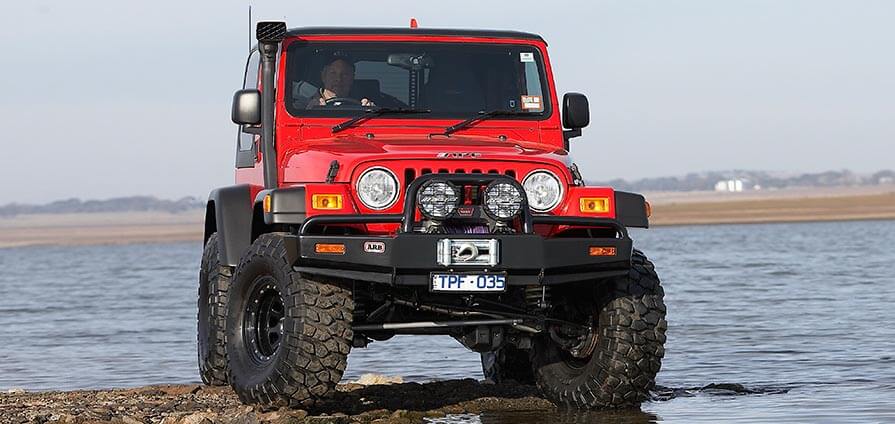
1. 2006 Jeep Wrangler TJ (Rubicon)
The 2006 Wrangler TJ Rubicon stands as the final and most refined iteration of a generation that purists often consider the pinnacle of Jeep engineering. Designed at the intersection of mechanical simplicity and off-road supremacy, this model is perhaps the most authentic representation of the Wrangler ethos.
The TJ Rubicon came equipped with factory Dana 44 axles, both front and rear—an upgrade that hardcore off-roaders often spend thousands on post-purchase.
With locking differentials and a 4:1 Rock-Trac transfer case, the 2006 Rubicon was built not just to handle rough terrain but to dominate it. The short wheelbase allowed it to pivot around tight trails and clamber over rocks with ease, giving it trail manners that remain legendary nearly two decades later.
But what truly makes the 2006 TJ Rubicon “built like a tank” is the quality of its suspension and mechanical integrity. The solid axle, coil-spring suspension was tuned for off-road articulation and resilience, providing a tough but responsive ride. Unlike later models that introduced more electronic components and comfort features, the TJ stayed true to its utilitarian roots.
There were no touchscreens or overly complex electronics to fail under moisture or vibration; everything was mechanical, tactile, and robust. The 4.0L inline-six engine, paired with a tough NV3550 manual transmission, further enhanced the vehicle’s reputation for longevity.
It’s not uncommon to find TJ Rubicons with over 250,000 miles on the odometer still crawling over boulders as if they were fresh off the assembly line. Jeep got this formula so right that many off-roaders today seek out 2006 Rubicons specifically for their build quality and lasting power. If any Wrangler deserves the “tank” label, it’s this one.
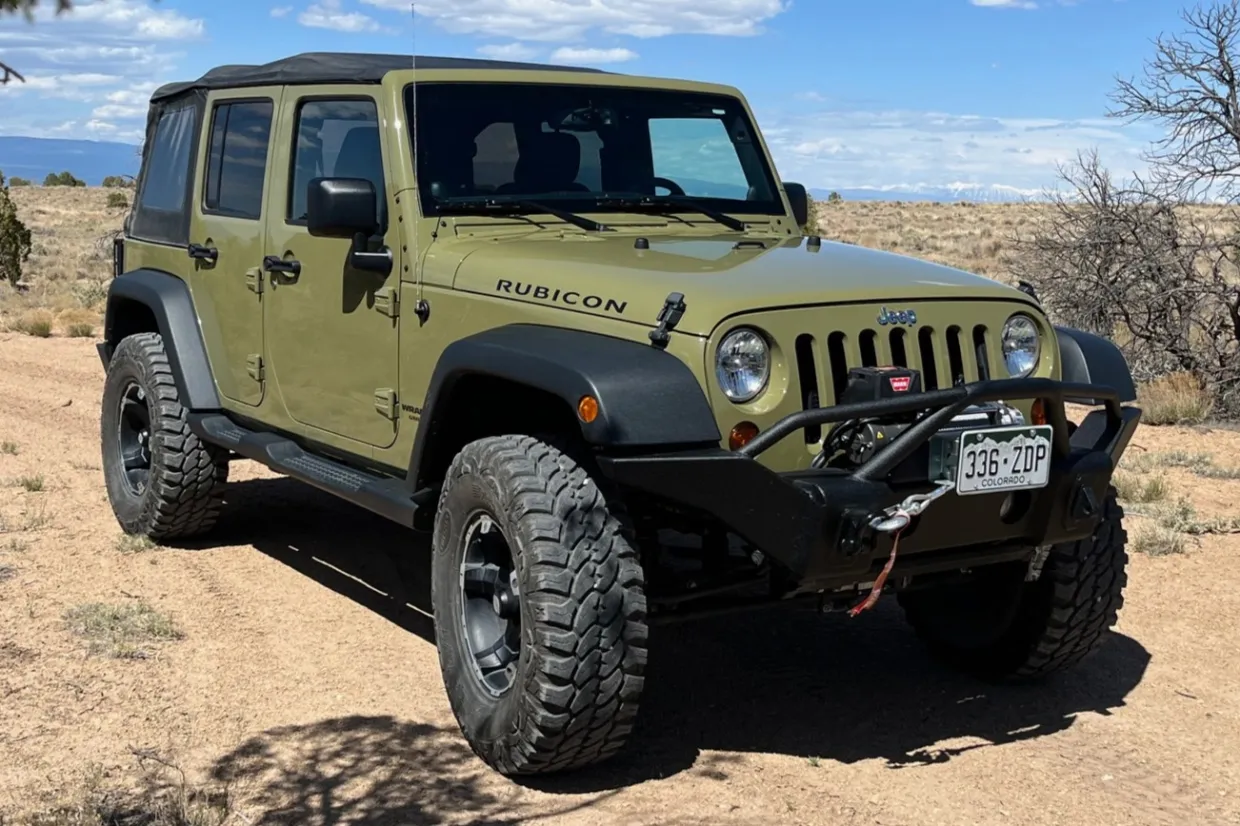
2. 2015 Jeep Wrangler JK Unlimited Rubicon
By 2015, the JK Wrangler had matured into a platform that blended rugged performance with daily usability, and the Unlimited Rubicon trim was the crown jewel of this evolution.
After several years of feedback and engineering improvements, Jeep refined the JK into a reliable, capable machine that could genuinely serve as both a trail monster and a comfortable highway cruiser.
The 2015 Rubicon Unlimited was fitted with robust Dana 44 axles, electronic front and rear lockers, and the much-lauded Rock-Trac transfer case with a 4:1 low gear ratio.
It also came with an electronically disconnecting front sway bar, enhancing articulation and maneuverability over uneven surfaces. These features, straight from the factory, allowed the 2015 JK Rubicon to tackle some of the harshest trails in North America with ease.
The suspension system, in particular, had reached a sweet spot. After addressing earlier complaints of steering vagueness and suspension fatigue from the earlier JK years, Jeep outfitted the 2015 Rubicon with stronger control arms, improved spring rates, and better dampers.
The result was a suspension setup that provided excellent wheel articulation, minimal body roll, and increased shock durability, even under aggressive off-road use. This was a Wrangler that could be driven from the office to the mountains, switch to 4LO, and then crawl up a rock face—without changing a single bolt.
The 2015 JK Rubicon Unlimited is also a favorite in the aftermarket community due to its mod-friendly design, but many owners report going 100,000+ miles with completely stock suspension.
It’s the kind of Wrangler that instills confidence both on the trail and under the chassis, showing few signs of wear even under heavy load. It’s one of the most balanced Wranglers ever built, and certainly one of the most durable.
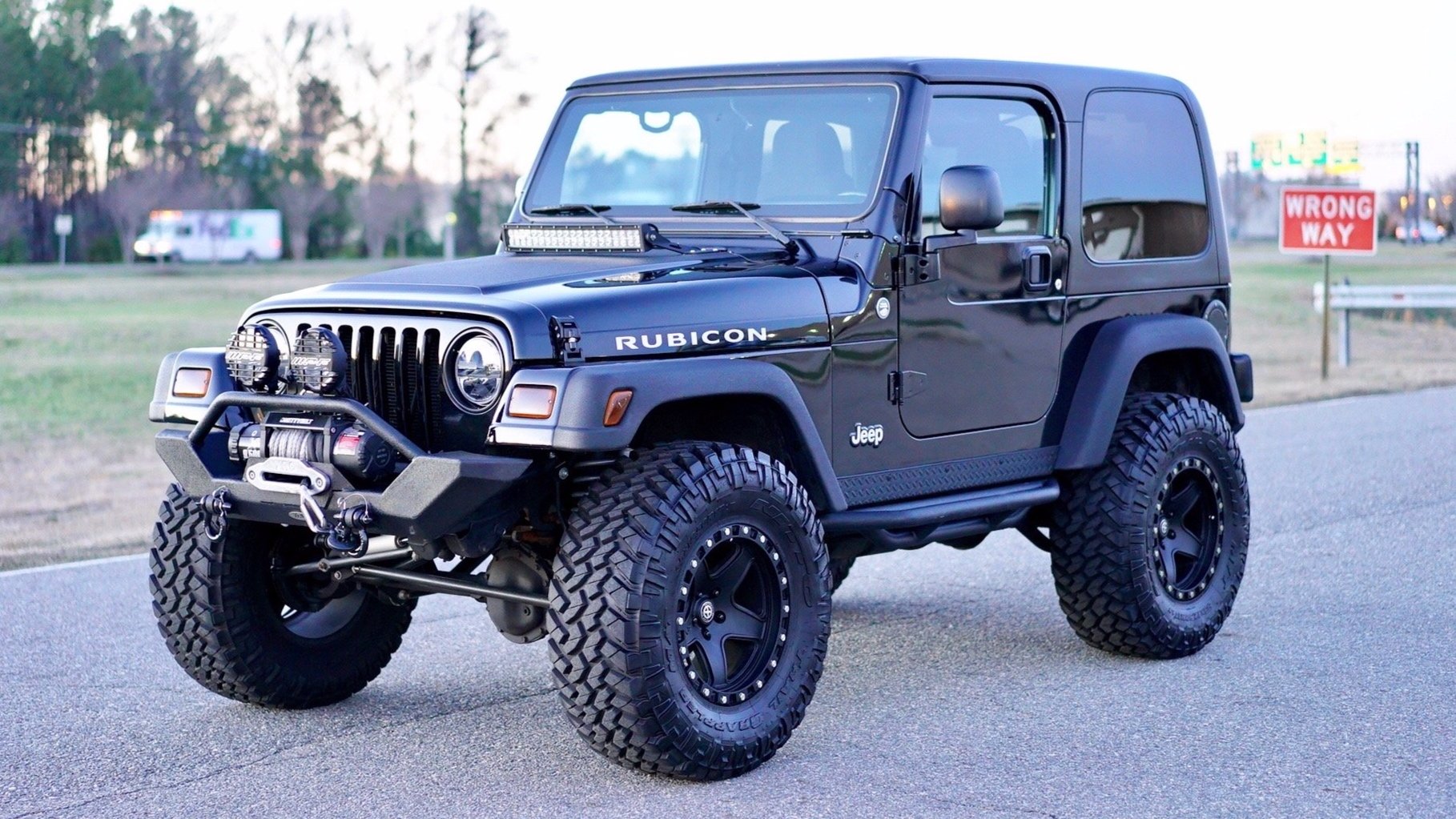
3. 1997 Jeep Wrangler TJ
The 1997 TJ was a monumental leap forward for Jeep and one of the most important transitions in the Wrangler’s lineage. Replacing the somewhat agricultural YJ, the TJ introduced a modern coil-spring suspension system that transformed how the Wrangler performed both on and off the road.
This was the first time a Wrangler rode with a level of articulation and comfort that felt controlled rather than crude. The move away from leaf springs signaled Jeep’s understanding that off-road capability didn’t have to come at the cost of daily drivability.
As a result, the TJ platform became a favorite among enthusiasts who wanted a vehicle that could wheel all weekend and commute all week. The 1997 model, in particular, kicked off this new era with a sense of purpose and simplicity that made it incredibly long-lasting.
Its legendary 4.0L inline-six engine—shared with the Cherokee and known for running practically forever—paired with a rugged five-speed manual transmission, meant the 1997 TJ was nearly unkillable if maintained.
The coil-spring, solid axle design was overbuilt for the vehicle’s weight, giving it the kind of flex and articulation that modern SUVs with independent suspension simply can’t replicate.
The steel ladder frame added structural rigidity that helped the suspension do its job even under extreme torsion, while also resisting corrosion better than most unibody competitors of the era. This setup meant that the suspension components didn’t just survive abuse—they welcomed it.
In the used market today, a well-maintained 1997 TJ still fetches a premium, not because it’s rare, but because it’s reliable. There’s a reason the TJ platform remains one of the most beloved in Jeep history: it’s straightforward, it’s strong, and it never says die.
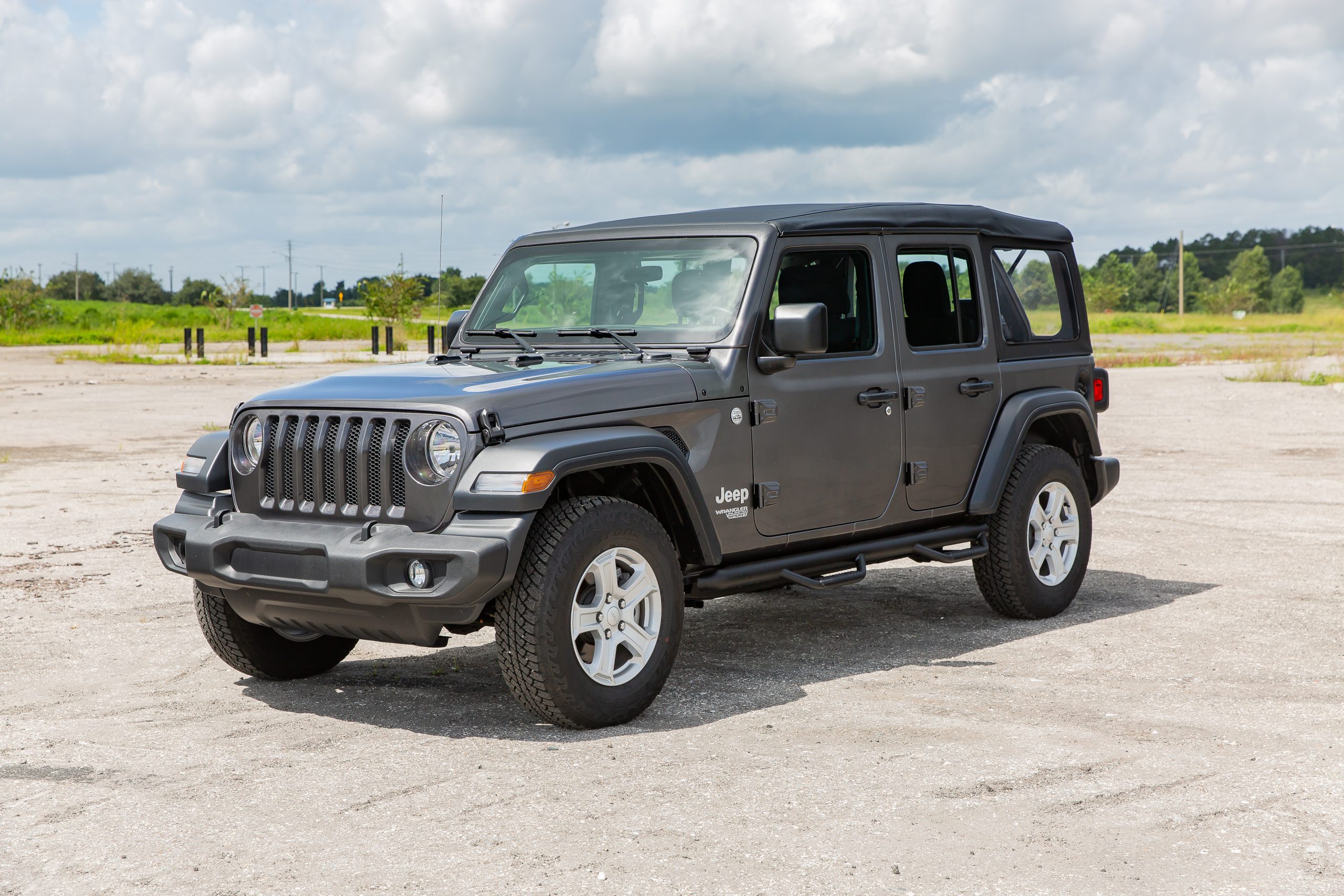
4. 2004 Jeep Wrangler LJ (Unlimited)
The 2004 LJ, or “Long Jeep,” introduced a longer wheelbase to the Wrangler platform without sacrificing its off-road credibility.
Built on the same rugged TJ architecture, the LJ combined the best aspects of trail performance with increased practicality. This additional length not only improved interior cargo space but also contributed to enhanced stability, particularly on steep climbs and descents.
While longer wheelbases can sometimes compromise breakover angles, Jeep offsets this with increased suspension refinement and stronger components. The LJ also came with the revered 4.0L inline-six engine and either a 42RLE automatic or NV3550 manual transmission—both proven in long-term durability.
From a suspension perspective, the LJ was a revelation. The coil-spring suspension, supported by high-quality control arms and track bars, was tuned to handle the added vehicle length without introducing significant body roll or handling issues.
Unlike its shorter TJ sibling, the LJ had better load distribution and ride quality on long hauls, which made it ideal for overlanding and trail expeditions.
The rear Dana 44 axle came standard in most trims, and its increased axle tube diameter added durability under load. Off-road, the LJ could climb, flex, and descend with grace, while on-road it maintained composure even when hauling gear or towing small trailers.
Few factory Wranglers before or since have struck such a compelling balance between off-road strength and utility. The 2004 LJ is often referred to as the “unicorn Wrangler” because of its short production run and high capability, and it lives up to that nickname.
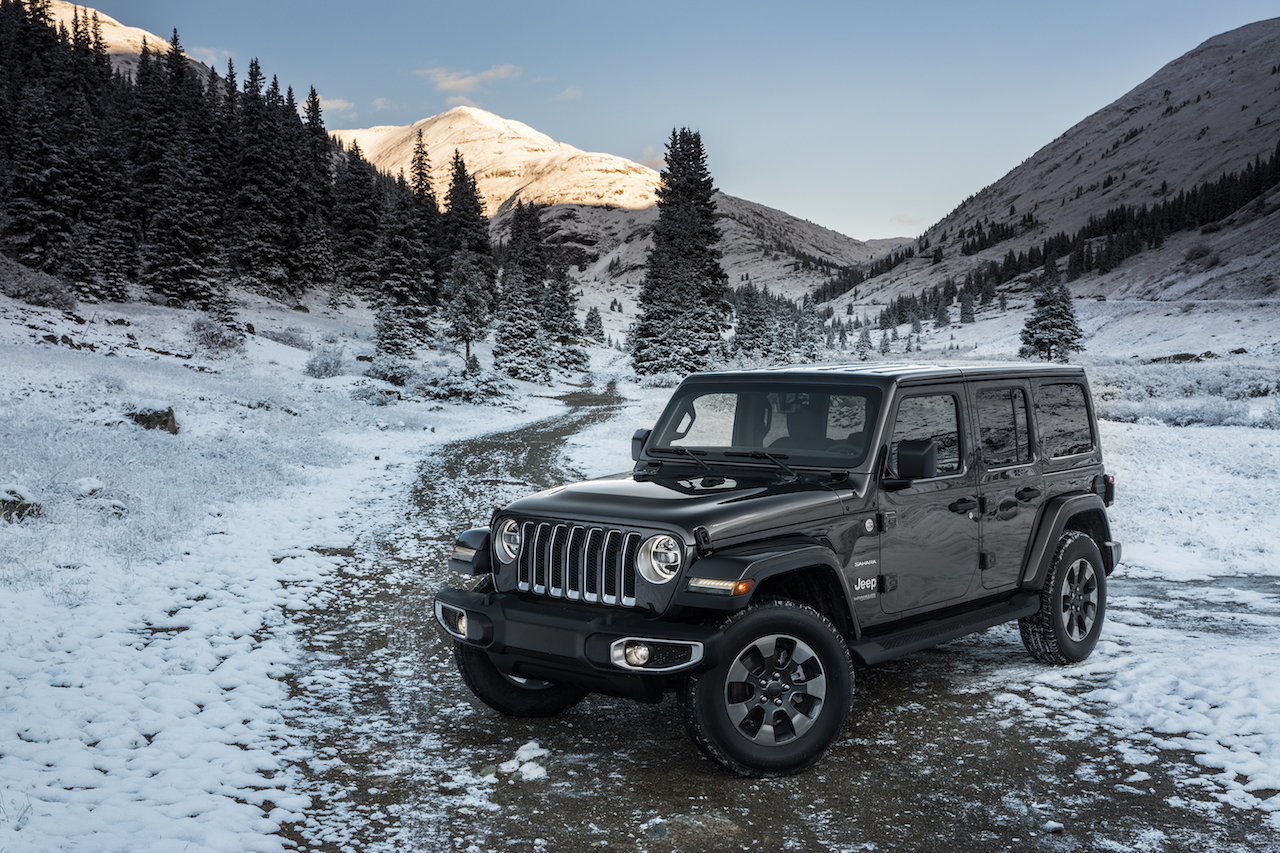
5. 2020 Jeep Wrangler JL Rubicon (2-Door)
The 2020 JL Rubicon in its 2-door configuration is a modern marvel that proves Jeep hasn’t forgotten how to build a tank, even in the era of tech-heavy SUVs. While the JL generation introduced numerous technological and comfort upgrades, the Rubicon trim in particular retained its mechanical soul.
Jeep outfitted the 2020 Rubicon with a high-strength steel frame, Dana 44 axles, electronically disconnecting sway bars, and a Rock-Trac transfer case, making it one of the most capable off-road vehicles ever produced straight from the factory.
The shorter 2-door variant also benefits from a tighter wheelbase, improving its breakover angle and trail agility, making it far more adept at maneuvering tough terrain compared to its longer 4-door sibling.
The suspension system in the 2020 Rubicon was upgraded with Fox monotube shocks, high-travel coil springs, and heavy-duty control arms. This isn’t just marketing fluff—the Rubicon’s undercarriage was engineered to withstand repeated abuse, whether you’re rock crawling in Moab or bombing down desert trails.
The damping is so well-calibrated that the vehicle remains composed during aggressive maneuvers without sacrificing articulation. Many owners report that the suspension shows minimal wear even after 50,000 miles of trail use, which is impressive given the increasing complexity of modern vehicles.
Even better, the JL Rubicon has integrated numerous suspension enhancements learned from years of JK feedback, including better steering geometry and more robust bushing materials.
It’s proof that Jeep can adapt and improve without compromising its identity. For those who want modern refinement with classic durability, the 2020 JL Rubicon 2-door is the tank for the 21st century.
5 Jeep Wranglers with Weak Suspension

1. 2007 Jeep Wrangler JK (First-Year Model)
The 2007 Jeep Wrangler JK was a landmark release—the first of its generation and the debut of the now-ubiquitous four-door Wrangler Unlimited. While it modernized the Wrangler in many ways, it also introduced a suite of problems that would haunt early JK owners for years.
Most notably, its suspension system failed to live up to the Wrangler nameplate’s hard-earned reputation for durability. Jeep moved from the more compact TJ platform to a larger, heavier body, but the early JK’s suspension components were not robust enough to handle this extra weight, especially in off-road conditions.
The factory control arms, track bars, and bushings were all particularly prone to premature wear, resulting in vague steering response, front-end wobble, and poor alignment retention. The issue wasn’t isolated to extreme use; even casual trail drivers and daily commuters reported the early onset of suspension degradation.
The most feared symptom among 2007 JK owners is the now-infamous “death wobble,” a violent front-end oscillation at highway speeds typically triggered by hitting a bump. This wasn’t just a minor inconvenience—it rendered the vehicle unsafe and undrivable in many cases until expensive repairs were made.
Many owners found themselves replacing suspension components like the steering stabilizer, control arms, ball joints, and track bar bushings well before reaching 60,000 miles. Jeep eventually issued technical service bulletins and design updates, but the 2007 model year never fully shook its reputation for suspension frailty.
It’s an unfortunate example of a major manufacturer underestimating real-world stress on a new platform, and while the JK series would improve in later years, the first-generation 2007 remains a cautionary tale for Jeep enthusiasts who value mechanical resilience above all.

2. 2012 Jeep Wrangler JK
Though the 2012 Wrangler JK was a major mechanical step forward in terms of engine performance, thanks to the introduction of the much more capable 3.6L Pentastar V6, it still retained a suspension system that failed to match the expectations of Jeep’s rugged branding.
By this point in the JK’s lifecycle, buyers anticipated that early issues would have been resolved, but many were disappointed. The suspension layout itself was unchanged from the original 2007 JK: a five-link coil spring setup with solid axles. However, by 2012, it became clear that Jeep hadn’t meaningfully upgraded the suspension’s core materials or long-term reliability.
Common complaints included persistent front-end clunking, uneven ride quality, and premature bushing deterioration. The factory shocks lacked the damping quality necessary to maintain control over washboard roads or mild off-road terrain, and the coil springs showed signs of sagging under modest loads.
Compounding the problem was the Wrangler’s popularity with aftermarket modders. Many 2012 JK owners lifted their rigs or added larger tires only to discover that the stock suspension couldn’t support even minor changes without triggering alignment issues, bump steer, and poor articulation.
Worse, Jeep’s build tolerances on the suspension and steering components were inconsistent, leading to variations in handling quality and off-road performance even among vehicles of the same trim level.
The “death wobble” remained a concern, as Jeep had yet to reinforce the front track bar mounts or improve bushing quality across the board.
Ultimately, while the 2012 JK had the power and size to handle serious terrain, it lacked the underbody strength and stability that should come standard in a vehicle of its heritage. For buyers expecting a bulletproof trail companion, this model year often required extensive aftermarket suspension work to keep up.
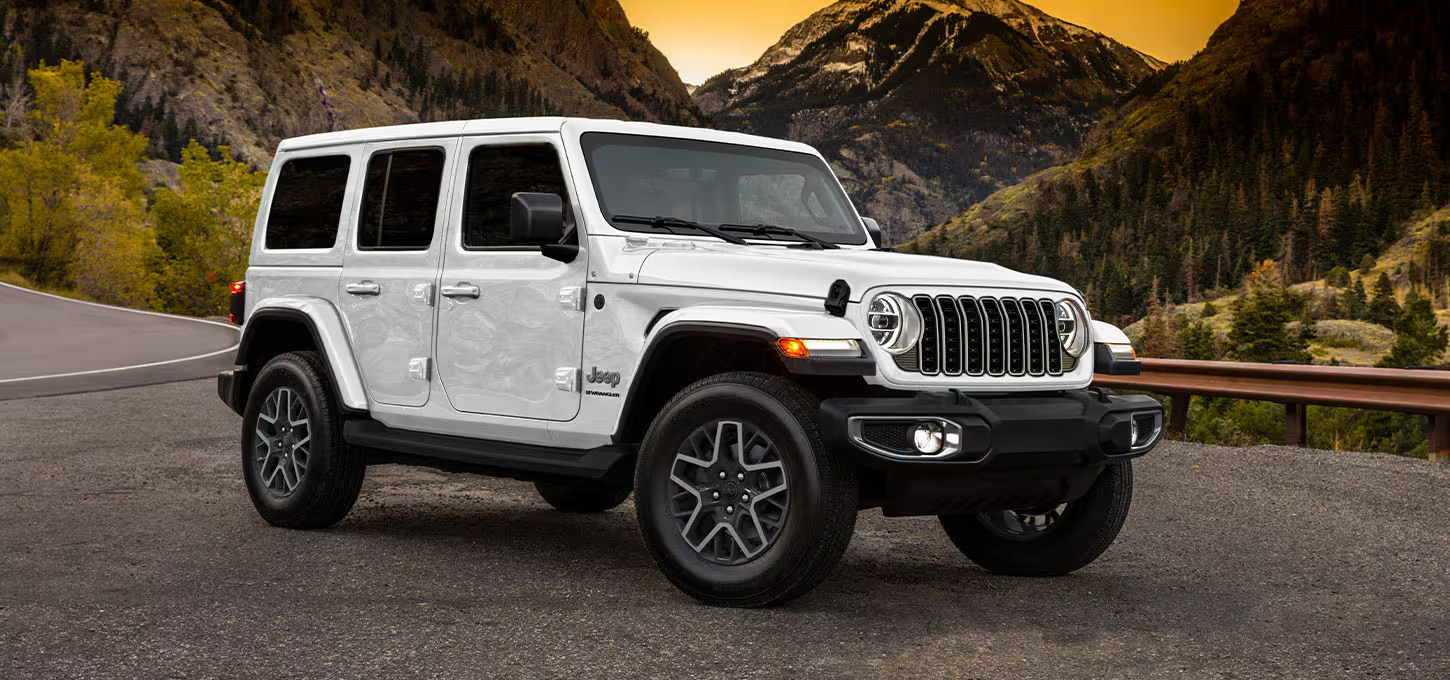
3. 2005 Jeep Wrangler LJ Unlimited (Base Trim)
The 2005 Jeep Wrangler LJ—also known as the “Unlimited”—is generally celebrated for its longer wheelbase and increased cargo capacity, but the base trim version of this model presents some subtle yet significant suspension shortcomings.
Unlike the Rubicon version, which was well-equipped with beefier Dana 44 axles and off-road-ready enhancements, the base LJ was outfitted with weaker components that couldn’t adequately support the extra length and weight of the vehicle.
While it retained the TJ’s suspension architecture—a coil-spring setup with a solid axle—the execution lacked the reinforcements necessary to preserve articulation and ride quality over time. As a result, many owners experienced noticeable degradation in handling, especially when carrying gear or towing light loads.
The factory springs and shocks in the base LJ are particularly vulnerable to wear, often sagging within a few years, even under normal use. This sagging, combined with the longer wheelbase, leads to increased chassis flex and potential bottoming out on uneven trails.
Unlike the more compact TJ, the base LJ lacked the stiffness and upgraded spring rates to handle real off-road demands without support from aftermarket components.
Further, the geometry of the longer wheelbase resulted in more stress at key pivot points in the suspension, accelerating wear in the control arms and bushings. Many LJ owners report that without immediate upgrades, the vehicle’s handling becomes unpredictable and imbalanced, especially during trail articulation or high-speed cornering.
While the LJ platform is a favorite for overlanding today, the base 2005 version needs substantial suspension upgrades to perform at the level many associate with the Wrangler badge. It’s a prime example of Jeep missing an opportunity by under-equipping a mechanically promising platform.
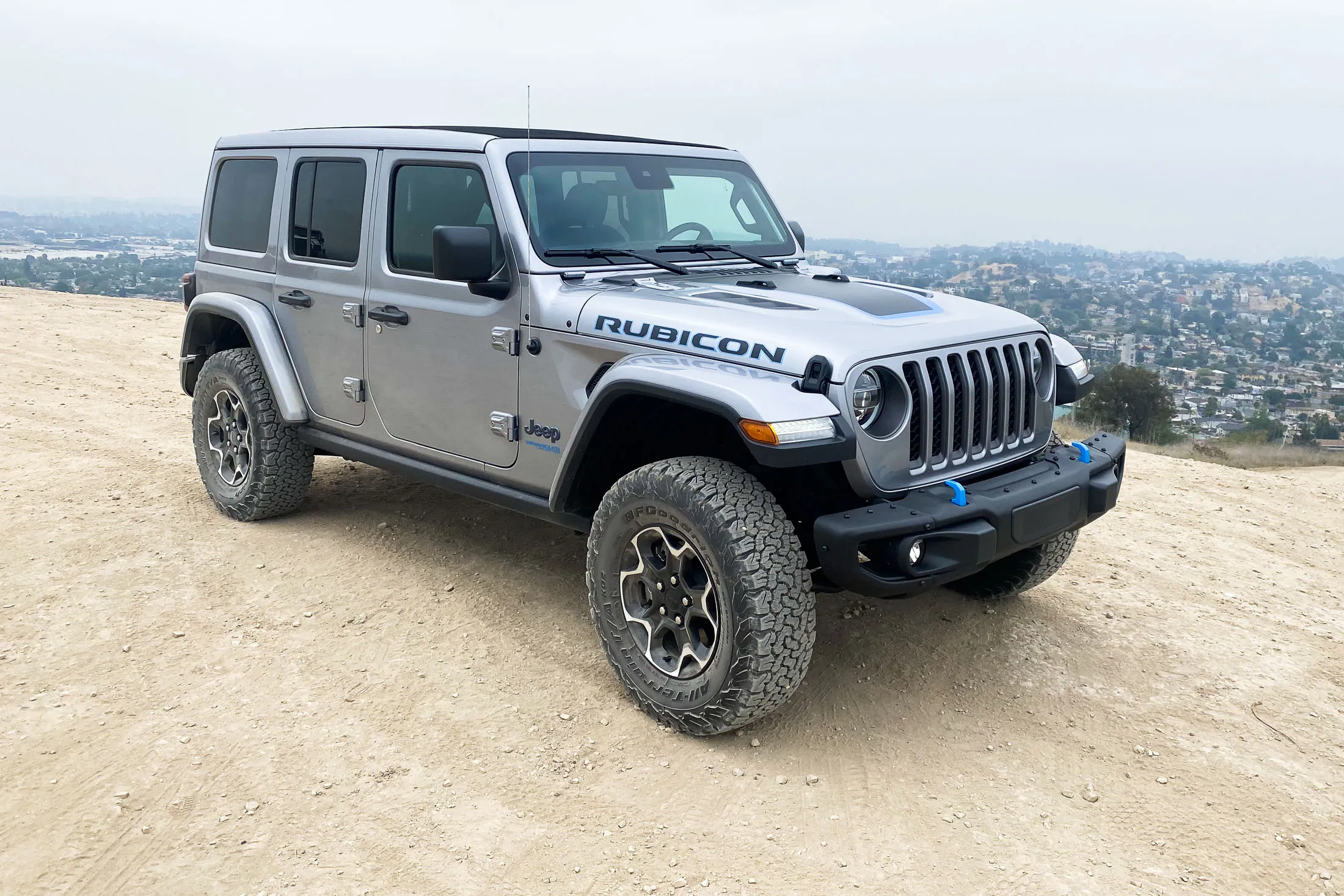
4. 2018 Jeep Wrangler JL (First-Year Model)
The release of the JL generation in 2018 marked a bold new chapter in the Wrangler’s evolution. Jeep sought to modernize the platform with lighter materials, a more aerodynamic profile, and an upgraded interior designed for both daily use and rugged adventure.
While the design direction was largely well-received, the 2018 JL, particularly in its launch year, was riddled with quality control issues that extended to the suspension. Jeep introduced a revised five-link suspension with improved steering geometry and upgraded components, but early builds of the 2018 model revealed serious flaws.
Front-end clunking, squeaking, and vibration were among the top complaints from owners. In some cases, these noises were accompanied by loose handling and excessive play in the steering, which undermined confidence in both on and off-road settings.
Mechanically, Jeep had tried to innovate with aluminum steering knuckles and lighter suspension arms, but these changes sometimes led to unexpected durability issues. Several reports indicated that bushings wore prematurely and that the steering stabilizer was inadequately calibrated to control front-end oscillations at highway speeds.
Not surprisingly, “death wobble” once again became a buzzword in Wrangler communities—now plaguing a brand-new generation just months after its debut. Jeep responded with technical service bulletins and component revisions, but the damage to the JL’s early reputation was done.
Owners who expected a modern Wrangler with superior engineering were forced to contend with suspension systems that creaked under pressure and required dealership visits for fixes that often only delayed the problem. While later JL models improved dramatically, the 2018 version remains a problematic example of rushed innovation and insufficient real-world testing.
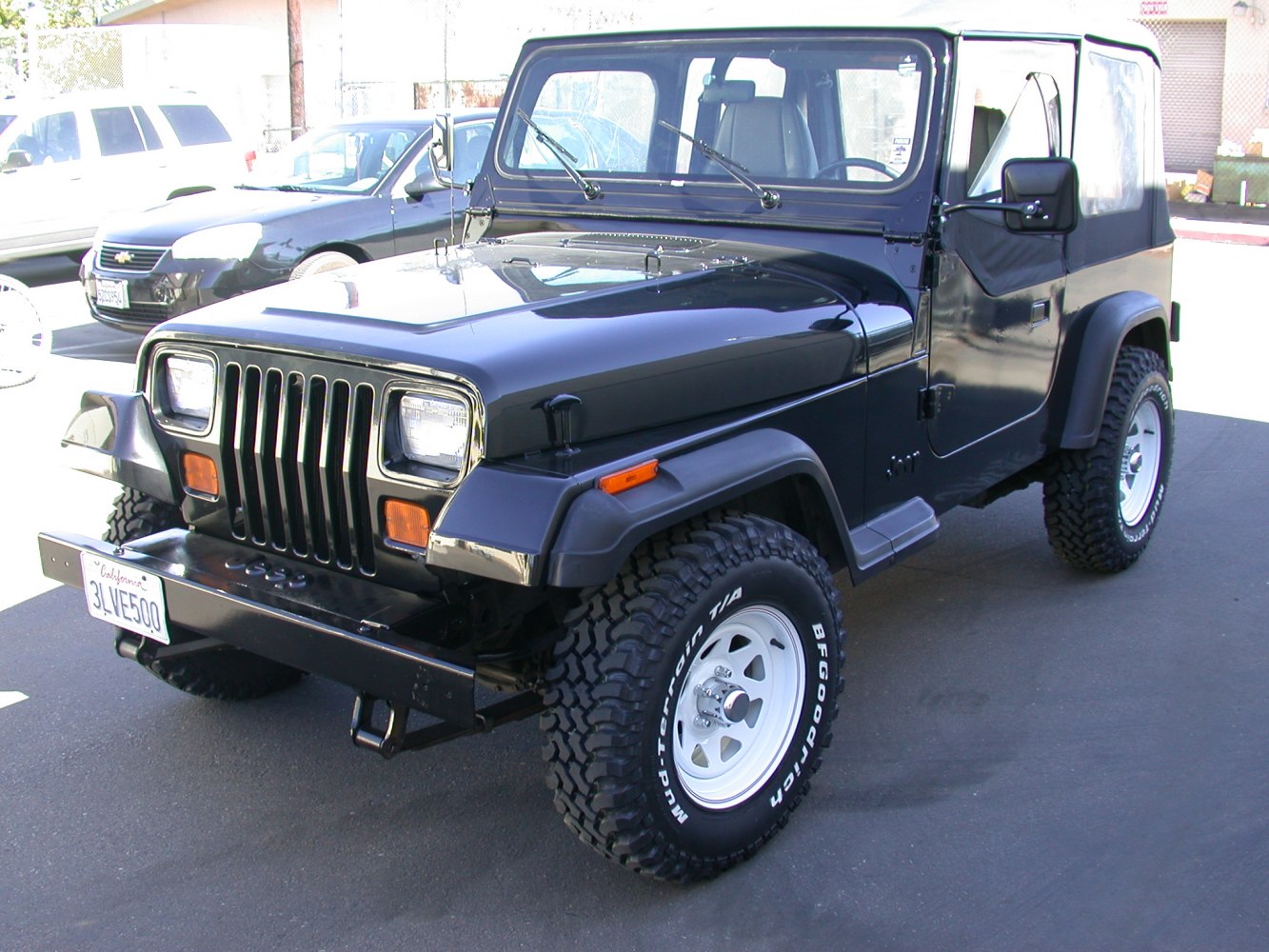
5. 1995 Jeep Wrangler YJ
The 1995 Jeep YJ was the final model year of a controversial Wrangler generation that introduced square headlights and a more road-oriented design philosophy.
While it holds a certain nostalgic appeal today, the YJ’s suspension system was fundamentally outdated, even by mid-90s standards. The leaf-spring setup, used on both front and rear axles, offered very little in terms of articulation and ride comfort.
This rigid design translated to a rough, choppy ride on pavement and severely limited performance on technical trails. In particular, the front leaf springs restricted upward and downward travel, causing wheels to lift off the ground rather than flex and maintain traction.
This compromised the vehicle’s capability in rock crawling and uneven terrain scenarios, making the YJ a less effective off-roader than its coil-sprung successor, the TJ.
Over time, the YJ’s leaf springs were also prone to fatigue. It’s common for owners of 1995 Wranglers to report sagging suspension, cracked spring leaves, and deteriorated bushings.
This not only affects the stance and ground clearance of the vehicle but also leads to poor steering alignment and bump steer, especially when larger tires are installed.
While the YJ may offer simplicity and ease of repair, the outdated suspension design severely limits its utility for anyone looking to use it for modern trail adventures. Most YJs on the trail today have been heavily modified with coil-over conversions or long-travel suspension kits—evidence that the stock system simply wasn’t up to par.
The 1995 YJ stands as a relic of an era when ruggedness was often confused with rigidity, and its suspension system is one of the clearest examples of how Jeep needed to evolve to meet the demands of serious off-roaders.
ALSO READ: 8 Cars With Rear Seat Angles Too Upright for Comfort
The Jeep Wrangler is much more than just a vehicle—it’s a lifestyle statement, a symbol of rugged freedom, and a machine built for people who believe the best roads are often unpaved. Over the years, Jeep has delivered a wide range of Wrangler models, each catering to different needs, budgets, and uses.
Some are purpose-built beasts, engineered to conquer punishing off-road terrain and survive trail abuse with minimal modifications. Others wear the badge and look the part, but fall short when put to the test, especially in the critical area of suspension strength and durability.
Suspension is the unsung hero of any off-road vehicle. It determines how well a Jeep flexes, absorbs impacts, handles rough conditions, and maintains traction on unpredictable surfaces. A Wrangler with a robust suspension system can feel unstoppable—it can climb, crawl, drop, and scramble through nature’s worst with confidence.
On the flip side, a Wrangler with a weak suspension might feel good on the pavement, but it will quickly expose its limitations once the road gets tough. You’ll feel the difference not just in performance, but in reliability, safety, and repair costs down the line.
Our breakdown highlights the wide chasm that exists within the Wrangler family. On one end, you have legends like the TJ Rubicon, JK Rubicon, JL Rubicon, Wrangler 392, and special editions like the Rubicon X—all built with trail dominance in mind.
These Wranglers come equipped with tough axles, aggressive gearing, factory lockers, and upgraded suspension systems that are the envy of many aftermarket builds. These are the Wranglers that live up to the Jeep heritage—they don’t just look tough; they are tough.
On the other end, we’ve looked at several models that were aimed at a different type of buyer. Trims like the JK Sport, TJ SE/X, JL Sport, JK X, and even the Wrangler Sahara prioritize comfort, affordability, or aesthetics over hardcore capability. They’re not inherently bad vehicles; in fact, many people love them for daily driving, road trips, or weekend fun.
But they lack the suspension backbone to handle serious off-roading without upgrades. Take one of these stock Wranglers on a demanding trail, and you may find yourself facing broken components, poor articulation, or simply getting stuck in places where a Rubicon would glide through.
The good news? The Wrangler platform is endlessly modifiable. Many of the “weaker” models can be upgraded with aftermarket suspension systems, axles, and reinforcement kits to make them trail-worthy. If you already own one of these or are considering buying one for on-road use with occasional trail time, know that you have options. But also understand that these upgrades come with costs—both in time and money.
Ultimately, choosing the right Wrangler comes down to being honest about your needs and how you intend to use the vehicle. If you’re a weekend warrior with dreams of tackling Moab or the Rubicon Trail, you’ll want to start with a model that has a solid suspension foundation.
If you’re mostly commuting or cruising around town, even the “weaker” models can serve you well. The key is knowing what’s under the skin and making an informed choice. Jeep offers the look across the lineup, but it’s the suspension that decides whether it’s just a look or the real deal.
